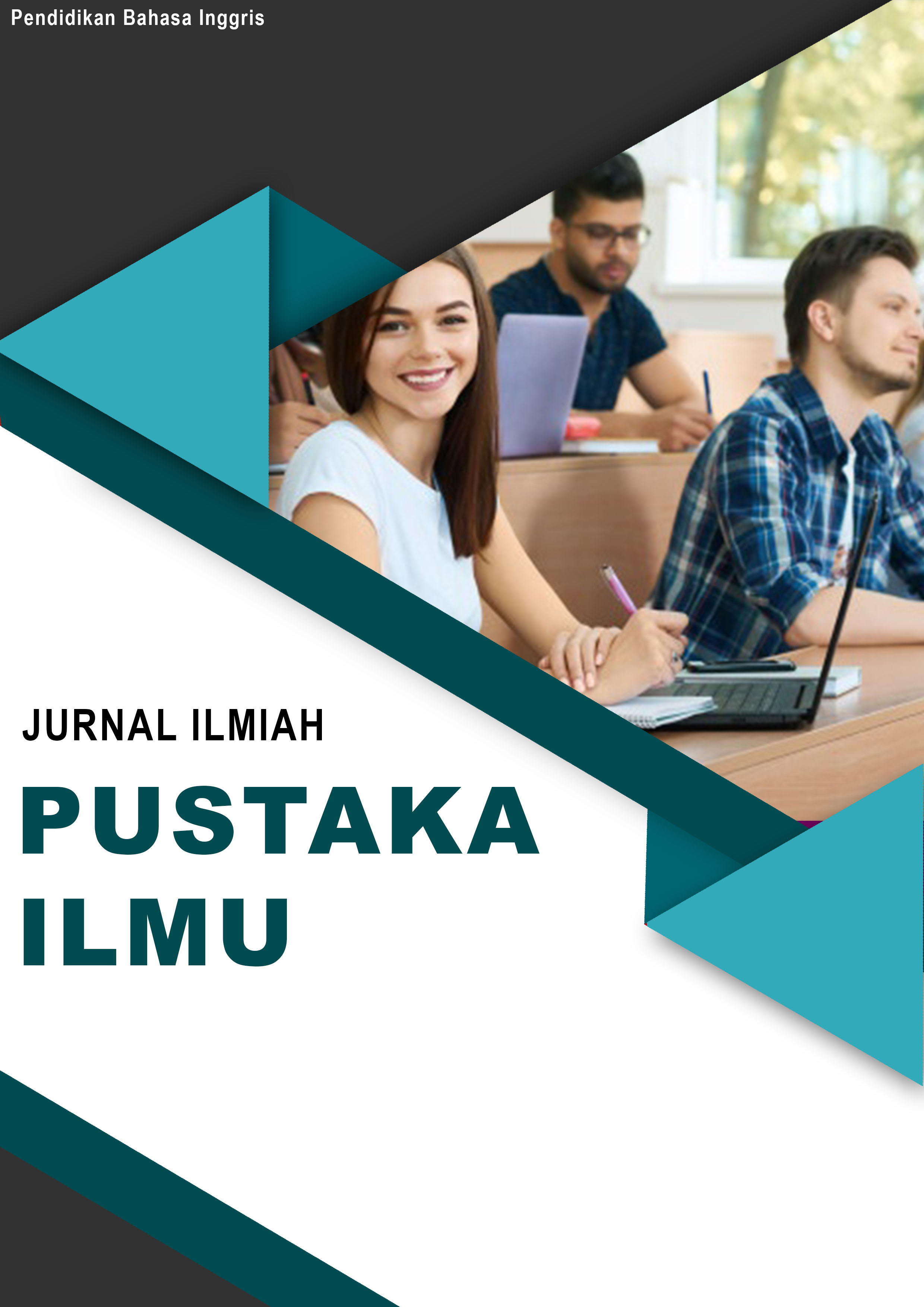WORD FORMATION PROCESS OF SLANG IN PITCH PERFECT MOVIE
Kata Kunci:
Language Variation, Slang, Word Formation.Abstrak
This research aims to find the types of slangs and the word formation of slangs found in Pitch Perfect and Pitch Perfect 2 movies. The movies portray a group of a cappella musicians in fictional college, Barden University that use slangs in their conversation. The researchers employs the theory of types of slang by Chapman and word formation classification by Yule as the basis of analysis. The researchers applied qualitative method to analyze the data. The data are in form of dialogues transcription taken from Pitch Perfect and Pitch Perfect 2 movies. Relating to types of slang, the researchers finds that there are four primary slangs and fifteen secondary slangs. As for word formation process, the researchers found that there are six words formations used to create the slangs. They are compounding which exist in five words, the initializations word formation is one word, the blending word formation is two words, the clipping word formation is two words, the prefix word formation is nine words, and the infix word formation is one word.
Referensi
Amelia, D., & Dintasi, F. D. (2019). Ephebophilia suffered by the main character. Teknosastik, 15(2), 81–86.
Aminatun, D., & Oktaviani, L. (2019). Memrise: Promoting students’ autonomous learning skill through language learning application. Metathesis: Journal of English Language, Literature, and Teaching, 3(2), 214–223.
Ayu, M. (2020a). Evaluation Cultural Content on English Textbook Used by EFL Students in Indonesia. JET (Journal of English Teaching), 6(3), 183–192.
Ayu, M. (2020b). Online learning: Leading e-learning at higher education. The Journal of English Literacy Education: The Teaching and Learning of English as a Foreign Language, 7(1), 47–54.
Ayu, M., & Indrawati, R. (2019). EFL textbook evaluation: The analysis of tasks presented in English textbook. Teknosastik, 16(1), 21–25.
Ayu, M., & Pratiwi, Z. F. (2021). THE IMPLEMENTATION OF ONLINE LEARNING IN ENGLISH LANGUAGE TEACHING DURING PANDEMIC: THE TEACHERS’VOICE. Journal of Research on Language Education, 2(2), 93–99.
Chavez, M. (2000). Teacher and student gender and peer group gender composition in German foreign language classroom discourse: An exploratory study. Journal of Pragmatics, 32(7), 1019–1058.
Gulö, I. (n.d.). IMPLEMENTATION OF ENGLISH THEME AND RHEME TO NIAS LANGUAGE.
Gulö, I. (2014). Unique characteristics of Nias language. International Journal of English and Education, 3(3), 26–32.
Handayani, E. T., & Aminatun, D. (2020). STUDENTS’POINT OF VIEW ON THE USE OF WHATSAPP GROUP TO ELEVATE WRITING ABILITY. Journal of English Language Teaching and Learning, 1(2), 31–37.
Kuswoyo, H. (n.d.). Advances in Language and Literary Studies Declarative Sentence Pattern In" Laskar Pelangi" And" The Rainbow Troo...
Lestari, M., & Wahyudin, A. Y. (2020). Language learning strategies of undergraduate EFL students. Journal of English Language Teaching and Learning, 1(1), 25–30.
Mertania, Y., & Amelia, D. (2020). Black Skin White Mask: Hybrid Identity of the Main Character as Depicted in Tagore’s The Home and The World. Linguistics and Literature Journal, 1(1), 7–12.
Muliyah, P., Aminatun, D., Nasution, S. S., Hastomo, T., & Sitepu, S. S. W. (2020). EXPLORING LEARNERS’AUTONOMY IN ONLINE LANGUAGE-LEARNING IN STAI SUFYAN TSAURI MAJENANG. Getsempena English Education Journal, 7(2), 382–394.
Muliyah, P., Rekha, A., & Aminatun, D. (2020). Learning from Mistakes: Students’ Perception towards Teacher’s Attitude in Writing Correction. Lexeme: Journal of Linguistics and Applied Linguistics, 2(1), 44–52.
Puspita, D., & Pranoto, B. E. (2021). The attitude of Japanese newspapers in narrating disaster events: Appraisal in critical discourse study. Studies in English Language and Education, 8(2), 796–817.
Pustika, R. (2021). Academic Whatsapp group: Exploring students’ experiences in writing class. Indonesian EFL Journal, 7(1), 89–96.
Qodriani, L. U. (n.d.). The Use of Phatic Particle ‘Geh’in Lampungnese’s Indonesian Language.
Qodriani, L. U., & Kardiansyah, M. Y. (2018). Exploring Culture in Indonesia English Textbook for Secondary Education. JPI (Jurnal Pendidikan Indonesia), 7(1), 51–58.
Rido, A. (2011). LANGUAGE LEARNING THROUGH INTERPRETING AND TRANSLATION: HIGHLIGHTING STUDENTS’EXPERIENCES. Proceedings of the 58th TEFLIN International Conference.
Rido, A., & Sari, F. M. (2018). Characteristics of classroom interaction of English language teachers in Indonesia and Malaysia. International Journal of Language Education, 2(1), 40–50.
Sari, F. M. (n.d.). UNDERGRADUATE STUDENTS’ATTITUDES TO THE IMPLEMENTATION OF WHATSAPP GROUP AS THEIR LEARNING MEDIA IN THE EFL CLASSROOM. Section Editors.
Sari, F. M. (2018). EFL STUDENTS’DILEMMA: FACTORS DETERMINING THEIR TALK IN THE LANGUAGE LEARNING PROCESS. Kolita.
Simamora, M. W. B., & Oktaviani, L. (2020). WHAT IS YOUR FAVORITE MOVIE?: A STRATEGY OF ENGLISH EDUCATION STUDENTS TO IMPROVE ENGLISH VOCABULARY. Journal of English Language Teaching and Learning, 1(2), 44–49.
Sinaga, R. R. F., & Pustika, R. (2021). EXPLORING STUDENTS’ATTITUDE TOWARDS ENGLISH ONLINE LEARNING USING MOODLE DURING COVID-19 PANDEMIC AT SMK YADIKA BANDARLAMPUNG. Journal of English Language Teaching and Learning, 2(1), 8–15.
Wahyudin, A. Y. (2015). The implementation of scientific method in teaching English as a foreign language at senior high school level. Universitas Pendidikan Indonesia.
WING, L. A. S. O. F. F. (n.d.). IMPLEMENTASI KENDALI LQR UNTUK PENGENDALIAN SIKAP LONGITUDINAL PESAWAT FLYING WING.
Yulianti, T., & Sulistiyawati, A. (2020). The Blended Learning for Student’s Character Building. International Conference on Progressive Education (ICOPE 2019), 56–60.
Yulianti, T., & Sulistyawati, A. (n.d.). ENHANCING PUBLIC SPEAKING ABILITY THROUGH FOCUS GROUP DISCUSSION. JURNAL PAJAR (Pendidikan Dan Pengajaran), 5(2), 287–295.
Yulianti, T., & Sulistyawati, A. (2021). Online Focus Group Discussion (OFGD) Model Design in Learning.


